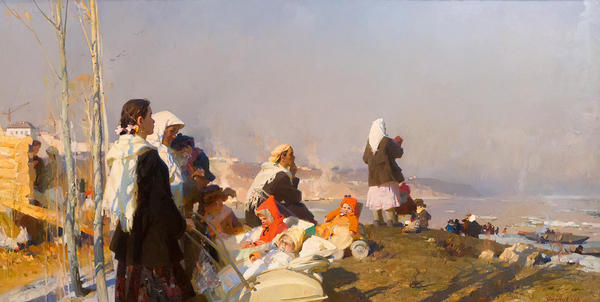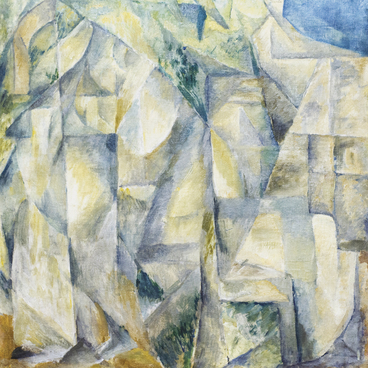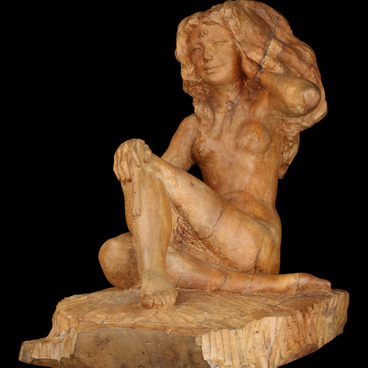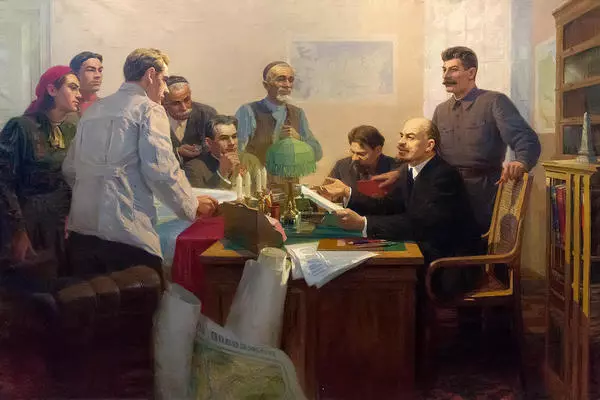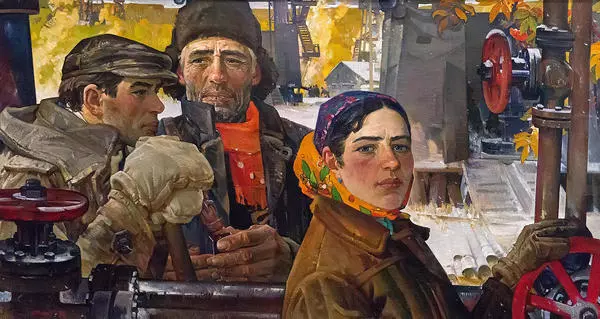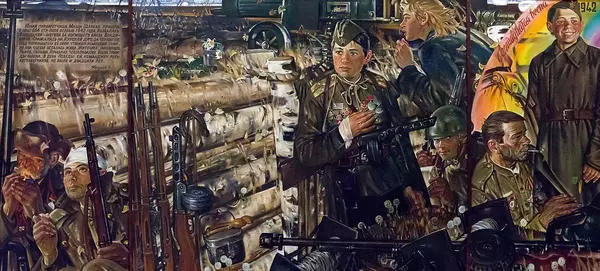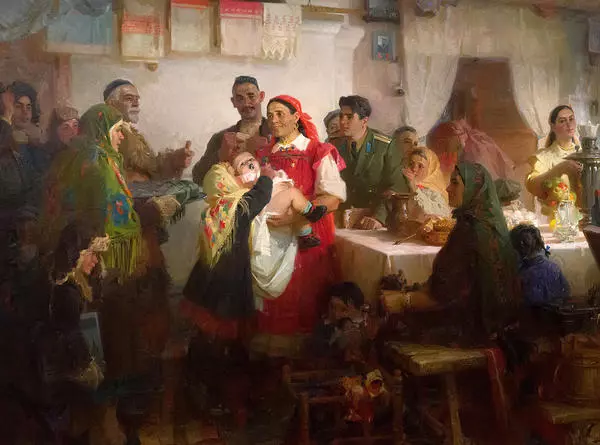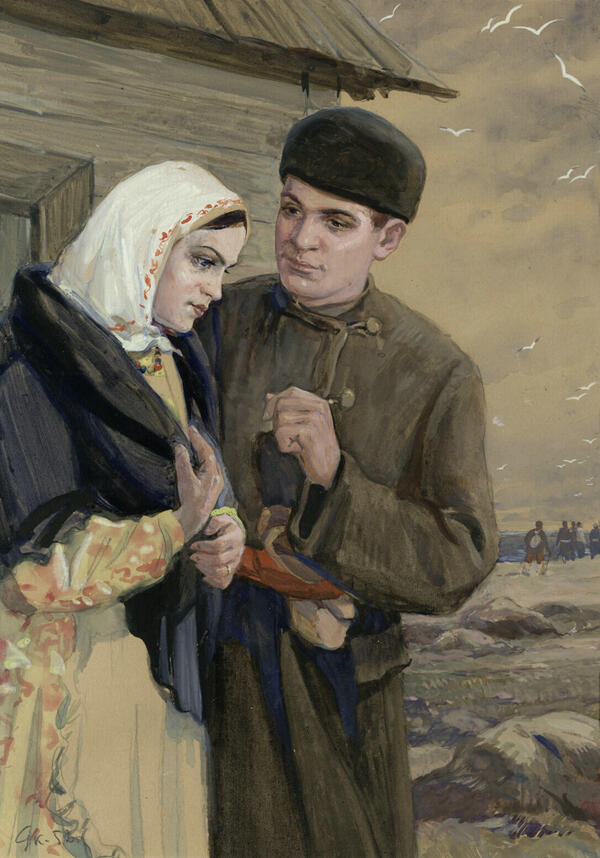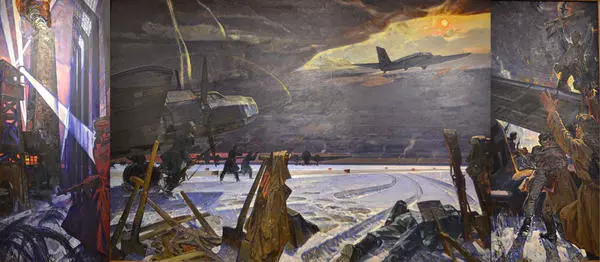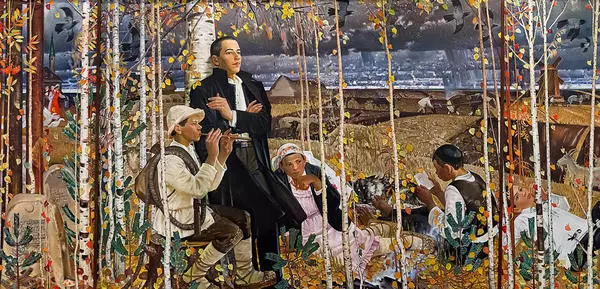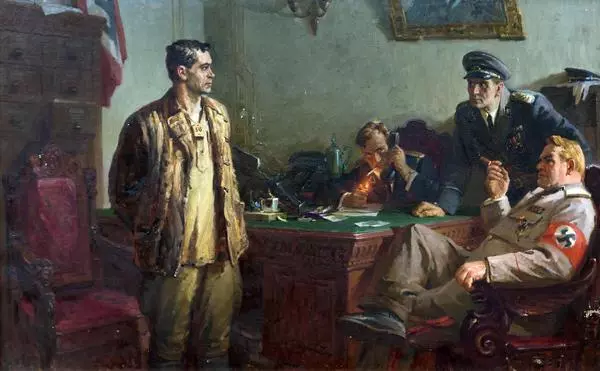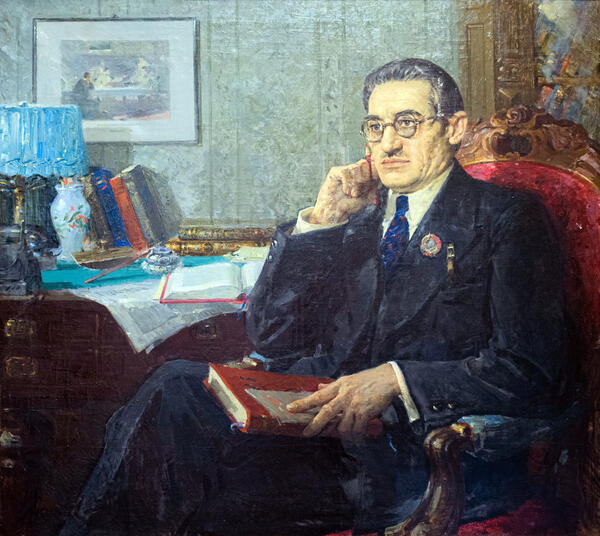Haris Yakupov, a key figure in the fine arts of post-war Tatarstan, was born in Kazan in 1919. He dropped out of the Kazan Art School to volunteer to the front when the Great Patriotic War began. After six long years, Yakupov returned home with three battle sketchbooks – he had not stopped drawing all through the war. Having returned, he immediately went to Moscow to take lessons from the famous artist Boris Ioganson, then began to teach at his alma mater Art School and, of course, to paint.
Gradually, the war veteran artist’s work began to show more of joyful and life-affirming motifs. He glorified the revival of his home land in the long-awaited time of peace. These motifs were especially evident in the Pestrechinsky period of the late 1950's and early 1960's, when Yakupov went to the Vakhitov Collective Farm of the Pestrechinsky district every summer and painted portraits of local hard-working people against the backdrop of nature.
His desire to combine natural landscapes with images of people, to fill the landscape with life found its full expression in the Spring on the Volga. The idea of its creation germinated in the artist’s mind at the very beginning of the Pestrechinsky period, in the spring of 1958, during his trip to the towns and workers’ settlements, which emerged on the banks of the Volga and Kama that followed their new wide waterways.
The newly built quay is crowded, and it is fun to be there on a spring afternoon. Mothers with infants are on a walk; kids are playing; passers-by admire the splendorous Volga spill during the ice-break. You can see fresh wood of new log cabins in the left-hand part of the composition, with new houses rising off in the distance. All this reveals the theme of revival of recently deserted sparsely populated areas.
Gradually, the war veteran artist’s work began to show more of joyful and life-affirming motifs. He glorified the revival of his home land in the long-awaited time of peace. These motifs were especially evident in the Pestrechinsky period of the late 1950's and early 1960's, when Yakupov went to the Vakhitov Collective Farm of the Pestrechinsky district every summer and painted portraits of local hard-working people against the backdrop of nature.
His desire to combine natural landscapes with images of people, to fill the landscape with life found its full expression in the Spring on the Volga. The idea of its creation germinated in the artist’s mind at the very beginning of the Pestrechinsky period, in the spring of 1958, during his trip to the towns and workers’ settlements, which emerged on the banks of the Volga and Kama that followed their new wide waterways.
The newly built quay is crowded, and it is fun to be there on a spring afternoon. Mothers with infants are on a walk; kids are playing; passers-by admire the splendorous Volga spill during the ice-break. You can see fresh wood of new log cabins in the left-hand part of the composition, with new houses rising off in the distance. All this reveals the theme of revival of recently deserted sparsely populated areas.

